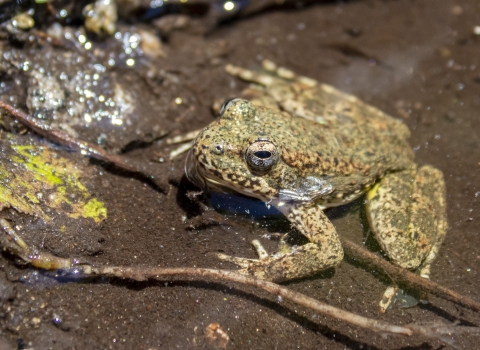The U.S. Fish and Wildlife Service has approved the recovery plan for the threatened Bartram's stonecrop, a plant found in isolated mountain ranges of southern Arizona and northern Mexico. The final recovery plan is based on the 2020 Species Status Assessment Report, as well as peer and partner review and public comments received during the public comment period on the draft recovery plan. The recovery plan includes efforts to restore the species, its woodland habitat, and its natural wildfire regime.
Bartram's stonecrop is a low-growing, stemless succulent that has cream-colored flowers with red spots. Although succulents are usually thought of as desert plants, Bartram's stonecrop grows alongside mosses, finding shade and moisture in the narrow canyons of high-elevation Madrean forests. The species was listed in 2021 as threatened under the Endangered Species Act due to threats such as reduced water availability, drought, habitat loss and alteration, and small population size.
“More than 80 percent of known populations are relatively small, under 150 individuals, and numerous threats could reduce populations even further,” said Julie Crawford, plant ecologist with the Service’sArizona Ecological Services Field Office. “As we work with our partners to support habitat improvements and reintroduce the species into appropriate microhabitats within some populations, we will adapt our techniques to what works best. Ultimately, the final recovery plan provides a flexible roadmap that ensures this rare and beautiful plant continues to add to the biodiversity of Madrean forests.”
While they are not regulatory, recovery plans provide a framework for the recovery of a species so that Endangered Species Act protection is no longer necessary. The final recovery plan describes actions considered necessary for recovery of the Bartram's stonecrop’s, establishes delisting criteria, and estimates the time and cost to implement recovery actions for the species.
The final recovery plan is available at ecos.fws.gov/ecp/species/8382 and fws.gov/media/final-recovery-plan-bartrams-stonecrop. To obtain a copy by mail, send a request to U.S. Fish and Wildlife Service, Arizona Ecological Services Field Office, 9828 North 31st Avenue, Suite C3, Phoenix, AZ 85051 or by phone 602-242-0210.
America’s fish, wildlife, and plant resources belong to all of us, and ensuring the health of imperiled species is a shared responsibility. We’re working to actively engage conservation partners and the public in the search for improved and innovative ways to conserve and recover imperiled species.




